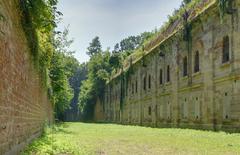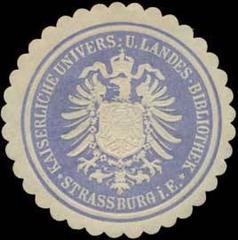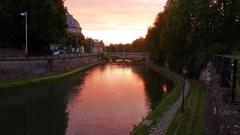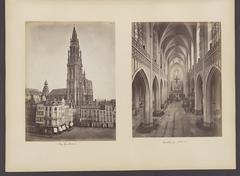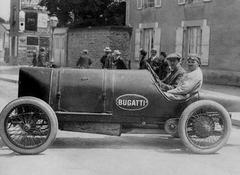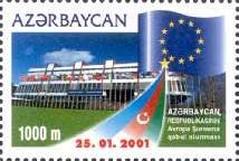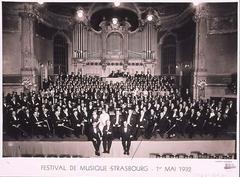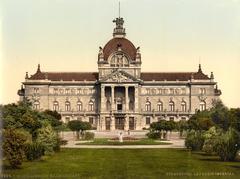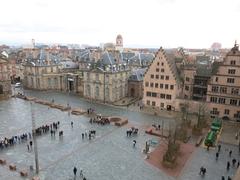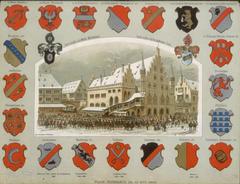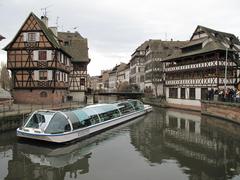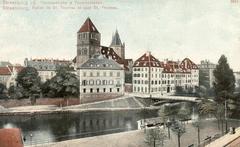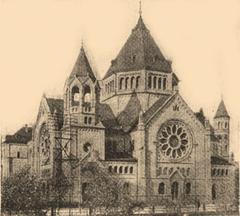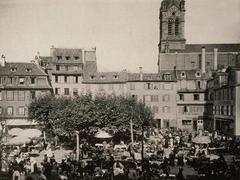
Guide to Visiting Fort Frère in Strasbourg, France
Date of Publication: 01/08/2024
Introduction to Fort Frère
Welcome to our comprehensive guide on Fort Frère, a historical gem in Strasbourg, France. Nestled in Oberhausbergen, this 19th-century fortification is a testament to the region’s rich military history and architectural prowess. Originally known as Fort Großherzog von Baden, the fort was constructed by the German Empire following the Franco-Prussian War of 1870-1871. It formed part of a massive belt of fortifications designed to protect the newly annexed Alsace region. Fort Frère’s strategic significance persisted through both World Wars, making it an essential site for history enthusiasts. This guide will provide you with everything you need to know, from the fort’s historical background and architectural features to practical visitor information, including visiting hours, ticket prices, and travel tips. Whether you’re an avid historian or a curious traveler, Fort Frère offers a unique glimpse into the past (Wikipedia).
Contents Overview
- Introduction
- Historical Background of Fort Frère
- Architectural Features
- Role During World War I and II
- Post-War Period and Preservation
- Visitor Experience
- Guided Tours
- Exhibitions and Events
- Educational Programs
- Visitor Tips
- Accessibility
- Opening Hours and Admission
- Ticket Prices
- Nearby Attractions
- Preservation Efforts
- FAQ
- Conclusion
Historical Background of Fort Frère
Fort Frère, originally known as Fort Großherzog von Baden, is a significant historical site located in Oberhausbergen, near Strasbourg. The fort was part of a belt of massive fortifications established around Strasbourg during the late 19th century. These fortifications were constructed by the German Empire following the Franco-Prussian War of 1870-1871, during which Alsace and Lorraine were annexed by Germany. The fort was named after the Grand Duke of Baden, a prominent figure in the German Empire.
Architectural Features
Fort Frère is an exemplary model of late 19th-century military architecture. The fortifications were designed to withstand artillery bombardments and were equipped with state-of-the-art defensive mechanisms of the time. The fort’s structure includes thick masonry walls, underground tunnels, and casemates designed to house troops and artillery. The fort covers a substantial area and includes various facilities such as barracks, ammunition depots, and command posts.
Role During World War I and II
During World War I, Fort Frère served as a strategic defensive position for the German Army. It was part of the larger network of fortifications that protected the German Empire’s western frontier. The fort’s robust construction and strategic location made it a formidable obstacle for any advancing enemy forces.
In World War II, Fort Frère was integrated into the Maginot Line, a line of defensive fortifications built by France along its borders with Germany and Italy. The fort played a crucial role in the defense of Strasbourg and the surrounding region. During the war, it was used as a POW camp and later as a base for the French Army after the liberation of Strasbourg in 1944 (Wikipedia).
Post-War Period and Preservation
After World War II, Fort Frère continued to serve military purposes for a time but eventually fell into disuse. Recognizing its historical significance, efforts were made to preserve the fort as a historical monument. Today, Fort Frère is classified as a Monument historique, a designation that helps protect and preserve France’s cultural heritage (Wikipedia).
Visitor Experience
Guided Tours
Visitors to Fort Frère can explore the fort through guided tours that provide in-depth insights into its history and architecture. These tours are often led by knowledgeable guides who can explain the fort’s strategic importance and the various features of its construction. Tours typically include visits to the underground tunnels, barracks, and other key areas of the fort.
Exhibitions and Events
Fort Frère hosts various exhibitions and events throughout the year. These events often focus on the history of the fort and the broader historical context of the region. Exhibitions may include displays of historical artifacts, photographs, and documents related to the fort’s history. Special events, such as reenactments and historical lectures, provide additional opportunities for visitors to engage with the fort’s history.
Educational Programs
Educational programs at Fort Frère are designed to provide students and educators with a deeper understanding of the fort’s historical significance. These programs often include interactive activities, workshops, and educational materials that help bring history to life for participants. Schools and educational groups can arrange visits to the fort as part of their history curriculum.
Visitor Tips
Accessibility
Fort Frère is accessible to visitors of all ages, but some areas of the fort may be challenging to navigate for those with mobility issues due to the uneven terrain and narrow passageways. It is advisable to wear comfortable footwear and be prepared for some walking.
Opening Hours and Admission
The fort is typically open to visitors during specific hours, which may vary depending on the season and special events. It is recommended to check the fort’s official website or contact the visitor center for the most up-to-date information on opening hours and admission fees.
Ticket Prices
Admission fees may vary based on age, group size, and special events. It is advisable to check the official Fort Frère website for the most accurate and current ticket prices.
Nearby Attractions
Visitors to Fort Frère can also explore other historical sites and attractions in the Strasbourg area. The city of Strasbourg itself is rich in history and culture, with landmarks such as the Strasbourg Cathedral, the Palais Rohan, and the Petite France district. The nearby forts, such as Fort Rapp and Fort Ducrot, also offer additional opportunities for historical exploration.
Preservation Efforts
Ongoing preservation efforts are crucial to maintaining Fort Frère as a historical site. These efforts include regular maintenance, restoration projects, and initiatives to protect the fort from environmental damage. Visitors can support these efforts by respecting the site, following guidelines, and participating in preservation programs.
FAQ
What are the visiting hours for Fort Frère?
Visiting hours vary depending on the season and special events. It’s best to check the official Fort Frère website for the most current information.
How much are the tickets for Fort Frère?
Ticket prices can vary. Please refer to the official website for the latest admission fees.
Is Fort Frère accessible for visitors with mobility issues?
While some areas may be challenging due to uneven terrain and narrow passageways, the fort strives to be accessible to all visitors. Comfortable footwear is recommended.
What other attractions are near Fort Frère?
Nearby attractions include the Strasbourg Cathedral, Palais Rohan, Petite France district, and other forts like Fort Rapp and Fort Ducrot.
Conclusion
Fort Frère stands as a testament to the rich military history of Strasbourg and the broader Alsace region. Its well-preserved architecture and historical significance make it a must-visit destination for history enthusiasts and tourists alike. By exploring Fort Frère, visitors can gain a deeper appreciation for the region’s past and the enduring legacy of its fortifications.
Stay updated on Fort Frère by checking their official website and following them on social media. For more historical explorations in Strasbourg, don’t forget to read our other articles and download the Audiala mobile app for a complete travel experience (Wikipedia).
Sources and Citations
- Wikipedia. (n.d.). History of Strasbourg. Retrieved from https://en.wikipedia.org/wiki/History_of_Strasbourg
- Fort Frère. (n.d.). Practical Information. Retrieved from https://www.fort-frere.eu/visitez-le-fort/informations-pratiques/
- Traces of War. (n.d.). Fort Frère. Retrieved from https://www.tracesofwar.com/sights/47106/Fort-Frère.htm
- Visit Alsace. (n.d.). Fort Frère. Retrieved from https://www.visit.alsace/en/223007763-fort-frere/
